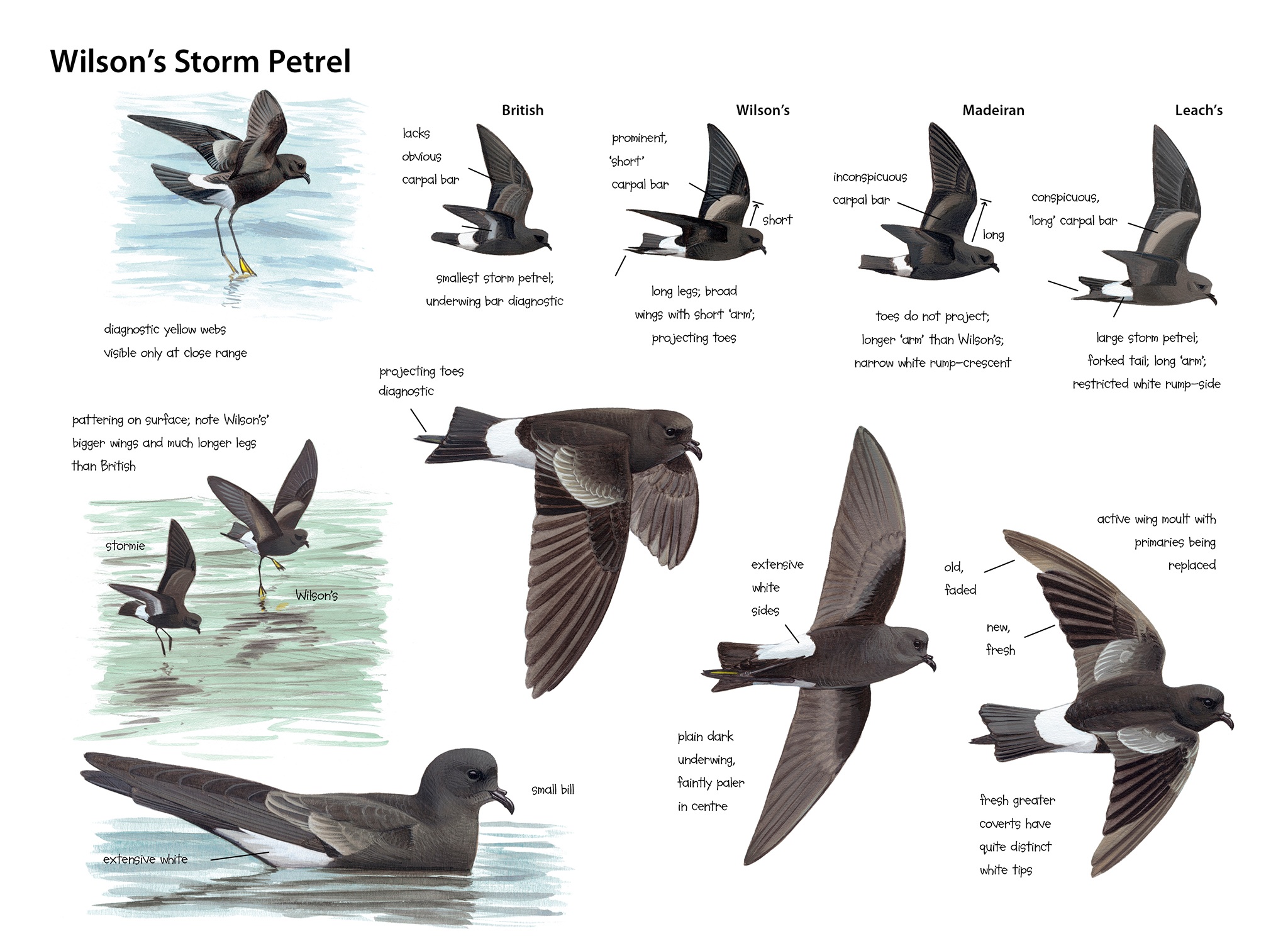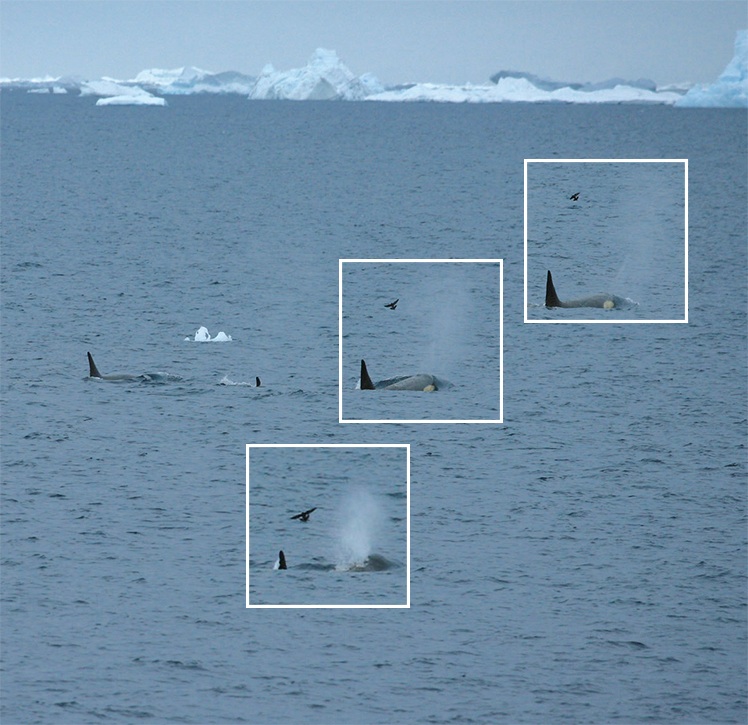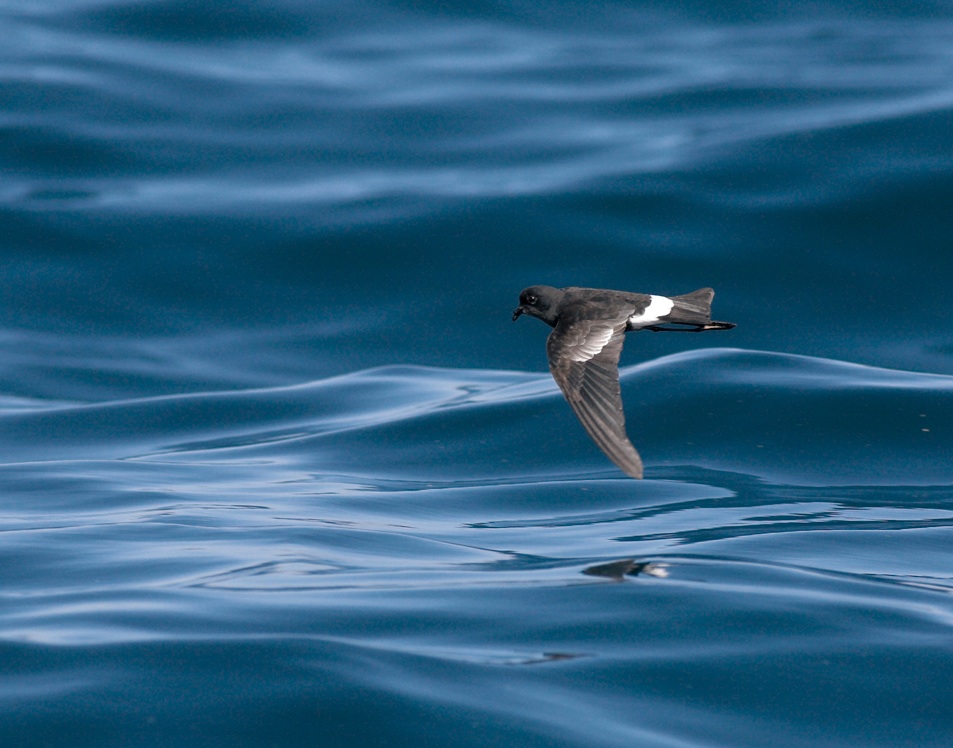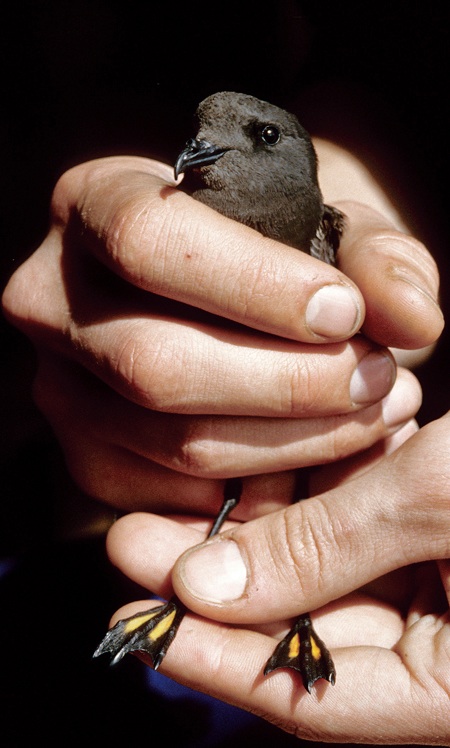
Killian Mullarney
Another storm petrel that has been reported calling at sea is Wilson’s Storm Petrel Oceanites oceanicus. In 1912, Robert Cushman Murphy, who worked at the American Museum of Natural History, sailed to South Georgia with a whaling vessel, and he observed Wilson’s almost throughout the journey. Murphy’s field notes put many modern observers to shame, and there are photographs by Howard Cleaves accompanying Murphy’s 1918 paper, showing Wilson’s at sea, which would not look out of place in a publication dating from many decades later. On 30 September 1912, when the ship was about 750 km south of the Cape Verde Islands, Murphy wrote in his journal: “Rainy morning, with lightning; no birds in sight. The weather cleared early, and petrels appeared about nine o’clock. They followed more closely than heretofore, coming under our stern to feed, and even flying forward around the bow. Occasionally I heard them utter a low, rasping note.” And on 7 October, 400 km further south: “Usually silent, they have peeped and chattered considerably today – sounds not unlike those made by a nestful of young chickadees when the parent arrives with food.”

Wilson’s Storm Petrel Oceanites oceanicus and Orca Orcinus orca, Weddell Sea, Antarctica, 16 March 2006 (Marc Guyt / AGAMI). Sequence in time, from left to right, during the Orca’s blow.
Murphy goes on to say that on 10 October 1912: “While we were in the midst of a school of whales, it chanced that a petrel dropped to the water to dance and feed just as a whale rose to breathe. The whale shot up suddenly, and the bird, pattering on the sea, happened to be at the precise spot where the whale’s blowhole broke the surface. The petrel was literally blown from the nostrils of the leviathan and was projected several feet into the air by the blast of steaming breath.” By coincidence, photographer Marc Guyt managed to photograph something very similar, while on an Atlantic Odyssey cruise off Antarctica.
Besides expletives, I imagine that the various calls of Wilson’s Storm Petrels at sea are mainly aggressive signals used while competing for food.

Wilson’s Storm Petrel Oceanites oceanicus, Tory Island, Donegal, Ireland, 11 September 2007 (Anthony McGeehan)
One of the Icelanders on Elliðaey during my visit was Jóhann Óli Hilmarsson who, on 31 July 1988, was a member of the first Western Palearctic ringing team ever to catch a Wilson’s Storm Petrel in a mist net (Hilmarsson & Hansen 1989). On that occasion, Jóhann Óli was on Bjarnarey, another of the Vestmannaeyjar. Wilson’s usually only visits land from November to May, so perhaps this Southern Hemisphere storm petrel had somehow got its hormones out of sync. It was trapped on a night of strong moonlight, at a time of night when the only Leach’s Storm Petrels arriving were breeders feeding their young. Unfortunately, the Wilson’s died while being held in captivity overnight. It had a fully vascularised brood patch. When dissected it turned out to be a female, and there were indications that it had bred before. It remains uncertain whether it had bred on Bjarnarey, and whether it was paired with a member of its own species. No more Wilson’s were found in Iceland until 11 August 2007, when a moulting bird was watched very well for nearly an hour, about 21 miles south of the Vestmannaeyjar.

Wilson’s Storm Petrel Oceanites oceanicus, female with brood patch, Vestmannaeyjar, Iceland, 31 July 1988 (Jóhann Óli Hilmarsson)
Famously, one or two Black-browed Albatrosses Thalassarche melanophris have committed the same ‘error’, making themselves at home among Northern Gannets Morus bassanus in Scotland and the Faeroes. ‘Out-of-hemisphere experiences’ can also happen the other way round, with northern species appearing at breeding sites in the far south. In November 1980, two Leach’s Storm Petrels were found calling in flight and prospecting burrows on Rabbit Island in the Chatham Islands, about 800 km east of Christchurch, New Zealand (Imber & Lovegrove 1982). More recently, Leach’s have bred on Dyer Island, South Africa, and possibly on nearby Dassen and Jutten Islands (Whittington et al 1999, 2001).
